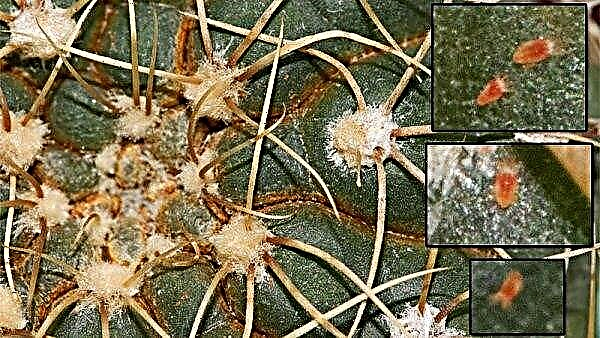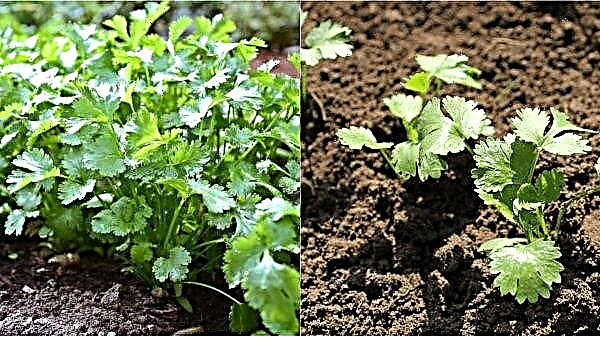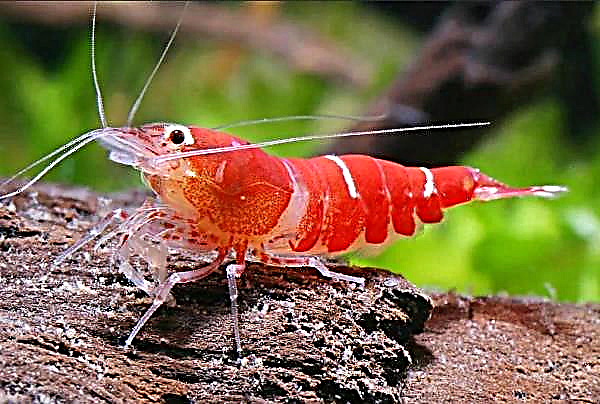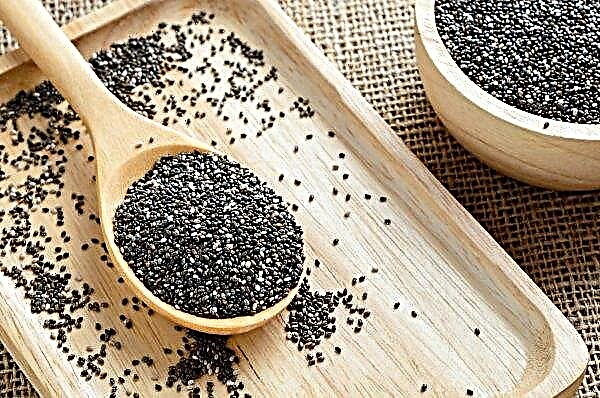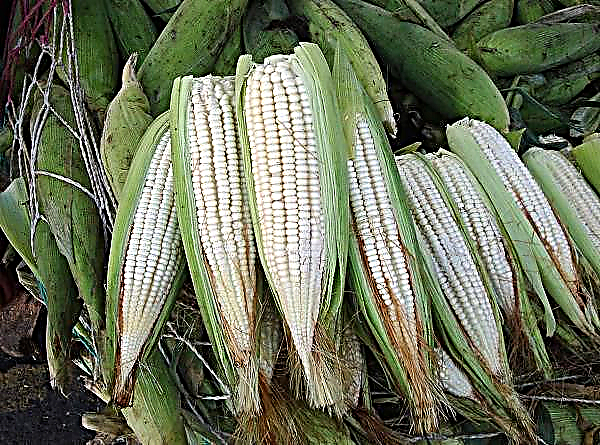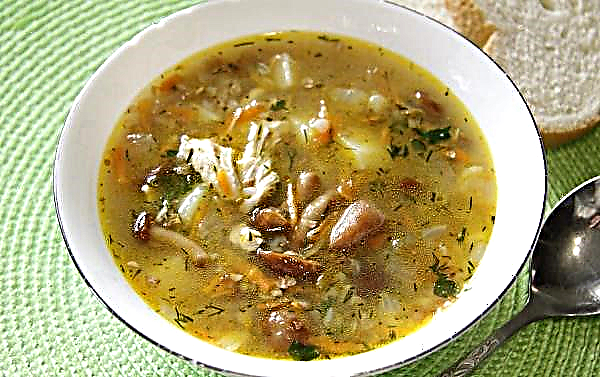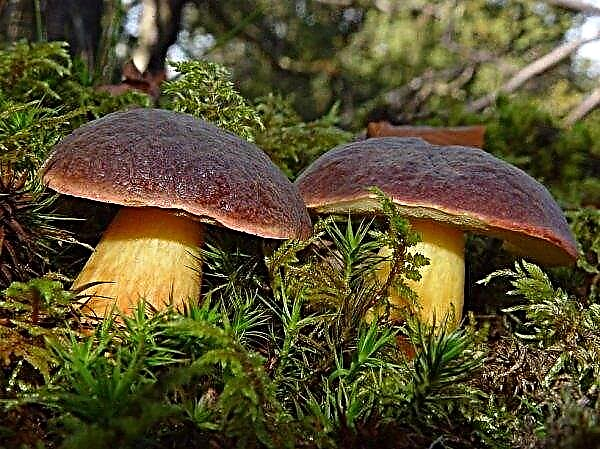One of the most dangerous pests that infects potato tubers is wireworm. The harmfulness of the parasite is quite large, and the fight against it is complicated due to its underground existence. Often, beginning gardeners have been fighting fiercely for many years. How to destroy the pest and what measures to take to prevent it, let's understand.
Pest Description
The wireworm is a small larva of a nutcracker bug. The parasite is not an individual adult, but just a “baby” of the bug. The larva got its name due to the strength and rigidity of the body, which is difficult to crush. The length of the wire reaches a size of 10–45 mm, has a yellow, brown or brown color. In the first year of “birth”, the larvae pose virtually no threat to potatoes. Starting from the second year and until the conversion to full-fledged beetles, which occurs on the 5th year, they, making passages in the ground, affect everything that occurs on the path, including root tubers. During the development period, wireworms from small larvae of yellow color gradually turn into parasites 2-3 cm long, with a rather strong body. The older the larva, the harder its trunk. It is almost impossible to crush a parasite with an age of 2-3 years. You can destroy it by cutting with a shovel or knife. Nutcracker beetle larvae are very voracious and omnivorous. They are happy to eat carrots, potatoes, tomatoes, cabbage.
During the development period, wireworms from small larvae of yellow color gradually turn into parasites 2-3 cm long, with a rather strong body. The older the larva, the harder its trunk. It is almost impossible to crush a parasite with an age of 2-3 years. You can destroy it by cutting with a shovel or knife. Nutcracker beetle larvae are very voracious and omnivorous. They are happy to eat carrots, potatoes, tomatoes, cabbage.
Important! If you do not take measures to eradicate the parasite, then in one summer you can lose from 65% to 80% of the total crop.
What does a potato affected by a wireworm look like?
Potato tubers damaged by wireworms are difficult to confuse with the negative effects of other pests. During the period of greatest activity, the parasite hides at a shallow depth of about 5-10 cm from the soil surface, so when digging the soil, for example, weeding from weeds, it can be easily found.
The presence of a pest can be recognized by such signs:
- the emergence of single potato bushes that wilted. The parasite is able to move only vertically, deepening into the ground by 1–2 m, while from the place of “feeding” it crawls no further than 20 cm, thus damaging plants that grow separately;
- small holes through and through in young potatoes. With early undermining of root crops, small through holes and small dark-colored recesses on the peel can be detected on them, which signal the negative impact of the larvae.

How to deal with potato wireworms
There are several effective methods that allow you to destroy the larvae of beetles on a potato field. The main thing - the fight against the disease should begin immediately and meticulously, while remembering that the life span of the parasite is 5 years. To achieve maximum effect and crop protection, experts recommend using several methods at the same time.
Did you know? Surprisingly, the nutcracker beetle itself does not pose a particular danger to vegetable crops. But his larvae can bring enormous damage to the crop. Females near the root neck of the root crop lay 7–10 eggs per clutch. For the summer period, this figure is 150-200 pcs.
Agrotechnical measures
Each gardener knows that strict adherence to the basic principles of agricultural technology will make it possible to grow a healthy plant and get high yields. In order to prevent the appearance of wireworms on the site, as well as to eliminate it, It is necessary to carry out the following agricultural activities:
- without fail, carry out autumn and spring plowing of the soil to a depth of at least 15 cm. Larvae or eggs of beetles that appear on the surface often become food for birds or die under the influence of adverse climatic conditions;
- plant potatoes next to plants that the parasite does not like: peas, beans, chickpeas and other legumes;
- regulate soil acidity. It was noted that in soil with low acidity, the beetle does not lay eggs and larvae, and the number of insects themselves is reduced by 60–80%;
- regularly weed the site. The root system of some weeds, especially wheatgrass and Ivan-tea, can serve as a food source for larvae, therefore, these plants should be destroyed on time;
- waterlogging of the soil. The most favorable environment for larvae is average soil moisture (50%) and temperature indicators of air +20 ... + 25 ° С. Waterlogged soil impedes the movement of parasites, so they begin to move up, crawling out. At this time, they are collected and destroyed;
- crop rotation compliance. It is recommended to plant potatoes on one bed for 1-2 years in a row, then change its location, and sow crops that the wireworm is afraid of, so-called siderates - legumes, rye, lupine, melilot, mustard, rapeseed, buckwheat.

Chemicals
As a rule, chemicals as a tool in the fight against wireworms are used in extreme cases, when it was not possible to destroy it by other methods. "Poison" can be prepared independently or purchased in specialized stores.
For the first option, you should mix such means:
- acetone - 200 ml;
- water - 800 ml.
Important! When using chemical preparations, one should not panic, because, firstly, they are safe for birds, animals and humans, and secondly, after 7-10 days after use, the potatoes are suitable for consumption.
Also in the "war" with the parasite, you can use:
- fertilizers enriched with nitrogen - ammonium nitrate, ammonium chloride;
- long-proven drugs - "Prestige", "Actara";
- modern innovative tools - “Thunder”, “Zemlin”.

Folk remedies
You can overcome the garden parasite with the help of folk remedies, which are natural, absolutely safe and allow you to use the root crop in food immediately after its processing.
Among all methods, several of the most effective are successfully used:
- Eggshell One of the most budgetary, simple recipes that perfectly repels larvae. It is recommended that the eggshell be thoroughly chopped and processed with the obtained potato tuber powder before planting. You can also add the product directly to the wells or scatter around the perimeter of the potato beds. Instead of shell, experts advise taking the husks of onions or garlic.
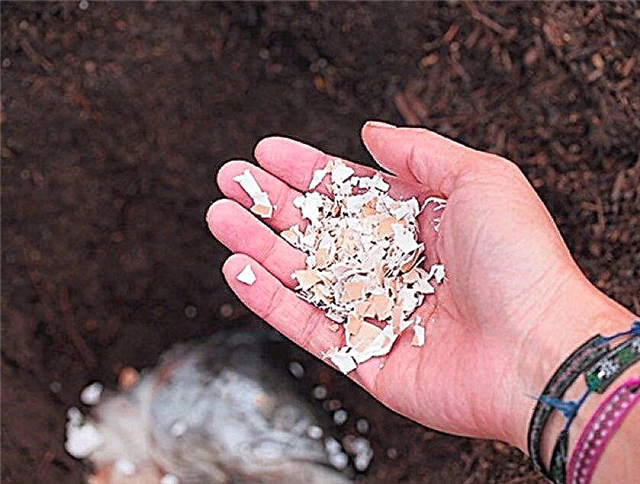
- Infusion of dandelion and nettle. In the fight against wireworms, herbal infusions are highly effective: add 500 ml of nettle tincture and 500 ml of dandelion tincture to 10 liters of water. The resulting mixture one week before planting root crops must be treated with holes. Repeat treatment every two days until planting.
- Ammonium nitrate. Due to the ammonia content, nitrate repels larvae, makes them go deeper into the ground, where they are deprived of food. It is enough to make 1 sq. Km. m 20-30 g of the product.

- Potassium permanganate. Before planting potatoes, it is recommended that all wells be shed with a weak solution of potassium permanganate (10 g of water, 3 g of powder). In the future, for prevention, adult plants can be treated.

- Wood ash. This tool is an excellent method of controlling wireworms in cases where the bush has reached a height of 15–20 cm. Ashes must be scattered with a thin layer between the rows of potatoes.

Biological products
There are a large number of biological-based preparations that allow you to successfully fight against larvae without using various chemistry.
Among biological agents, several are distinguished:
- application of lime, dolomite flour or ash to the soil, which can reduce the acidity of the soil, thereby forcing the wireworm to look for more comfortable living conditions for it;
- use of potassium permanganate. Before planting, you should carefully spill the soil with a weak solution of potassium permanganate, while about 300 ml of the product will be needed per hole;
- top dressing with ammonium sulfate. The introduction of special preparations based on ammonia allows the larvae to migrate into the deeper layers of the soil, where they are not ways to damage root crops. For 1 square. m will need up to 30 g of funds.
Important! When working with insecticides, personal protection should be used: gloves, glasses, clothes.
During the potato maturation period in the “war” with larvae, it is allowed to use special organic preparations, for example, Nemabact, which is a biological insecticide created on the basis of entomopathogenic nematodes with the addition of bacteria dangerous to the wireworm. It should be diluted according to the instructions and pour under the bushes. You can apply it during planting potatoes, spilling every hole. A similar effect has another popular bio-insecticide Entogem.
Using lures
Effectively cope with the parasite, while special bait will help not to harm the landing.
To prepare traps, you can use:
- Raw pieces of potatoes or carrots. Vegetables must be cut into small cubes, placed in a jar, bury the container in the ground neck. Larvae will quickly slip onto such a treat. And so that they could not get out, the neck of the can should be covered with paper.
- Old potatoes. Last year’s vegetable tubers need to be soaked for one day in a solution of any insecticidal preparation, dried and bury in different places of the site, while the place of instillation is fixed with wooden pegs. Two days later, buried tubers must be dug up and burned.
- Corn, oats, rye. To organize a wireworm trap, a small amount of these plants should be sown on the site two weeks before planting potatoes. Before planting, you need to dig up the cultures along with the larvae and burn them.
Did you know? Toad and ground beetle will help fight wireworms, since these larvae are one of their favorite treats. For this reason, you should not quickly get rid of toads if they "wield" on the site.
Preventative measures
Of course, prevention is considered the best method of controlling wireworms, as the treatment of tubers before planting is particularly successful.
Two methods are used for this:
- Insecticidal. Before planting, all seed should be treated with solutions of such preparations as Aktara, Aktofit, Prestige. The preparations are diluted with water according to the instructions and the tubers are soaked for the specified time.
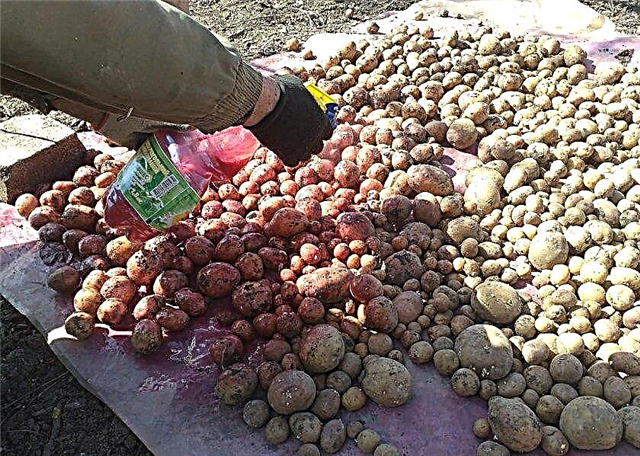
- Herbal. Tubers can be processed before planting with the help of herbal infusions. In this case, nettle infusion is suitable (pour 0.5 l of boiling water per 0.5 kg of grass and insist for at least three days) or dandelion infusion (250 g of raw material is poured with 10 l of boiling water, insist 3 days).
Tuber dressing is considered one of the most important preventive measures in the fight against the parasite, however, it does not exclude the use of other, no less effective methods of killing larvae. The wireworm is a rather dangerous pest, which in the absence of quality control measures can lead to a decrease in productivity by 60–80%. Fortunately, today there are many folk remedies, biological and chemical preparations that allow you to destroy the larva in a short time, while maintaining the integrity of the potato crop.







